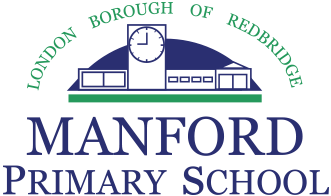
Manford Primary School
Phonics
Phonics and Reading at Manford Primary School
At Manford Primary School we do not follow an accredited scheme. We follow our own planning and a combination of resources produced by 'Read,Write,Inc and our own adapted resources.
Children are taught across Reception, Year 1 and 2, by the class teacher and some small groups led by trained support staff.
Reception: From September, Reception start learning phonics as a whole class.
We begin with Phase 1 phonics, which concentrates on developing children's speaking and listening skills and lays the foundations for the phonic work which starts in Phase 2. This is taught through speaking and listening activities, split into 7 aspects:
- General sound discrimination – environmental
- General sound discrimination – instrumental
- General sound discrimination – body
- Rhythm & rhyme
- Alliteration (e.g. silly sausages sizzle slowly)
- Make your own voice sounds (e.g. going down a slide/ keep everyone quiet/ buzz like a bee).
- Oral blending (ready to read) & segmenting (ready to write)
Phase 2 - Reception
In this phase children will continue practising what they have learned from phase 1, including ‘sound-talk’. They will also be taught the phonemes (sounds) for a number of graphemes (letters).
Sounds are introduced in sets;
- Set 1: s a t p
- Set 2: i n m d
- Set 3: g o c k
- Set 4: ck e u r
- Set 5: h b f ff l ll ss
Children begin with learning to blend vowel consonant (VC) and consonant vowel consonant (CVC) words.
Learning to read some tricky words: the to I no go into
Reading is taught 'whole class', individually and sometimes in small groups, according to children's needs. Class teachers regularly hear children read individually. Reading and writing are intrinsically linked.
Phase 3 – Reception and recapped in Year 1.
The purpose of this phase is to:
teach more graphemes, most of which are made of two letters, for example, ‘oa’ as in boat
- Set 6: j, v, w, x
- Set 7: y, z, zz, qu
- Consonant digraphs: ch, sh, th, ng
- Vowel digraphs: ai, ee, igh, oa, oo, ar, or, ur, ow, oi, ear, air, ure, er
practise blending and segmenting a wider set of CVC words, for example, fizz, chip, sheep, light
learn all letter names and begin to form them correctly
read and write words in phrases and sentences.
Learn more tricky words:
he she we me be was you they all are my her
Phase 4 - Year 1
Children continue to practise previously learned graphemes and phonemes and learn how to read and write:
No further phonemes taught at this phase.
Reading & spelling words containing adjacent consonants e.g. crunch, float, groan.
They can be in the initial or final point in a word.
stop frog pond best twist scrunch street
CVCC words: tent, damp, toast, chimp
For example, in the word ‘toast’, t = consonant, oa = vowel, s = consonant, t = consonant.
CCVC words: swim, plum, sport, cream, spoon
Reading & spelling multi syllable words; banana, helicopter
Learning some tricky words:
said, so, do, have, like, some, come, were, there, little, one, when, out, what
Phase 5 – Year 1 and Year 2
Children entering Phase 5 will already be able to read and spell words with adjacent consonants, such as trap, string and flask. They will also be able to read and spell some polysyllabic words.
In Phase 5, children will learn more graphemes and phonemes. For example, they already know ai as in rain, but now they will be introduced to ay as in day and a-e as in make.
Alternative pronunciations for graphemes will also be introduced:
e.g. ea in tea, head and break, ow in town/ grow
The Phonemes in phase 5 are:
ay, ou, ie, ea, oy, ir, ue, aw, wh, ph, ew, oe, au, a_e, e_e, i_e, o_e, u-e.
With practice, speed at recognising and blending graphemes will improve.
Word and spelling knowledge will be worked on extensively.
The children will learn new graphemes for reading and spelling.
Alternative spellings for phonemes, e.g. rain hay make eight
Children will become more automatic at reading & spelling words
Expectation: To automatically read all of the 100 high frequency words. To accurately spell most of the 100 high frequency words.
Phase 6 – Year 2
Recognising phonic irregularities and becoming more secure with less common grapheme – phoneme correspondences.
Applying phonic skills and knowledge to recognise and spell an increasing number of complex words.
Introducing and teaching the past tense- This is a main focus in Year 2
Investigating and learning how to add suffixes- This is a main focus in Year 2
Teaching spelling long words.
Finding and learning the difficult bits in words.
How can you help at home?
Sing an alphabet song together
Play ‘I spy’
Continue to play with letters (milk bottle tops with sounds written on them), using some two-grapheme (letter) combinations, eg: r-ai-n = rain blending for reading, rain = r-ai-n segmenting for spelling
Praise your child for trying out words
Look at tricky words
Look for phonic games
Play pairs with words and pictures
REMEMBER: Phonics is not the only thing needed to become a fluent reader.
Please continue to read with your child each night and encourage them to:
Sound out
Re-read to check it makes sense.
Use pictures for clues.
Ask questions about the book.
And most importantly ENJOY READING!
“Children fall in love with books because of the memories created when they snuggle up and read with someone they love.” – Raising readers